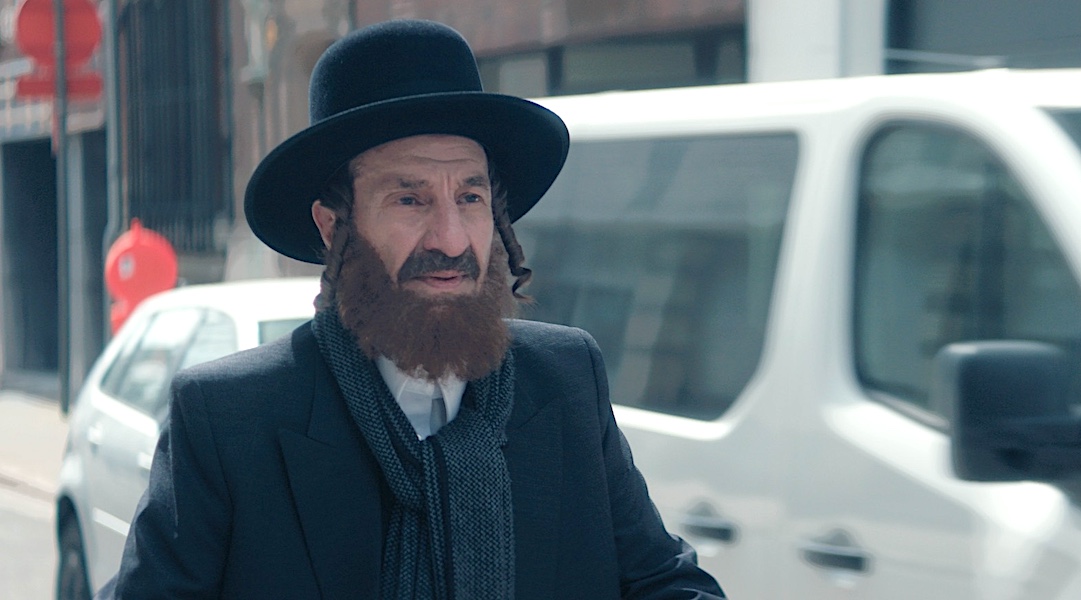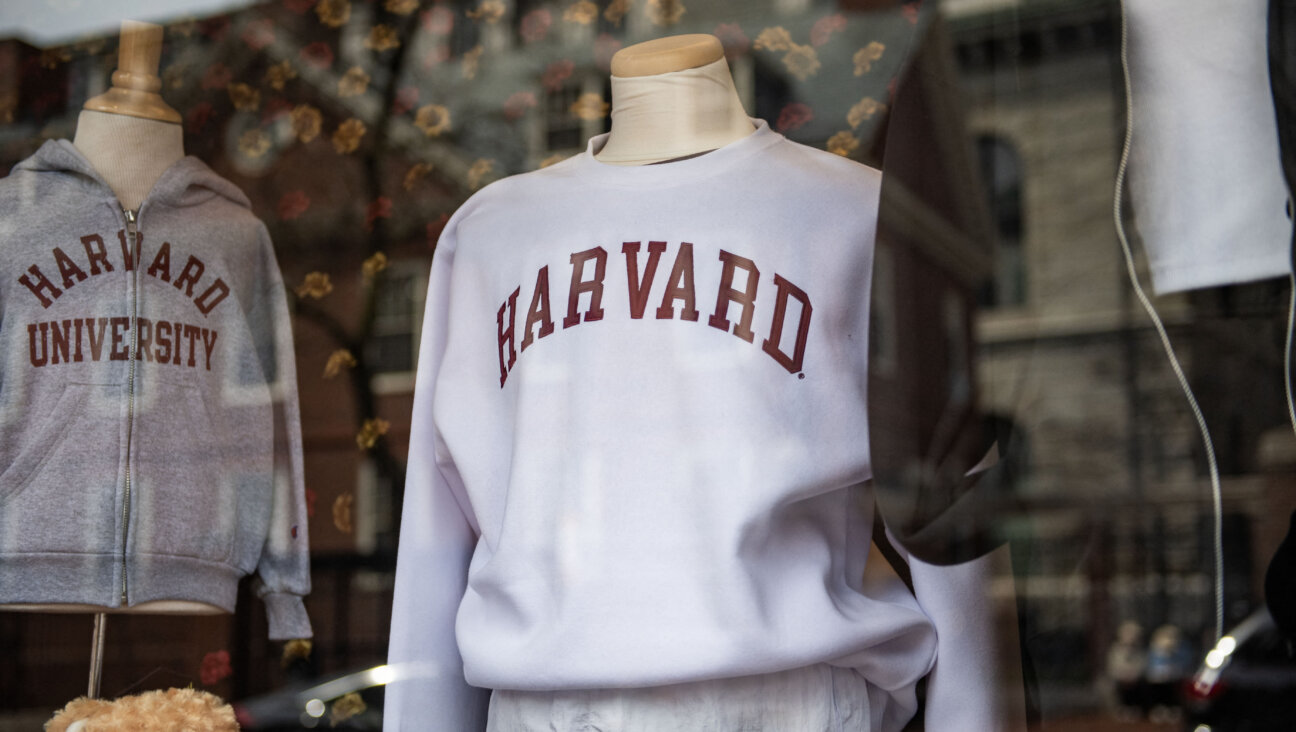A Bit of Flair With Their Frum

Lustrous Linings: Ultra-Orthodox Jews who insist on dark colors on the outside can let their inner selves sing out loudly. Image by COURTESY MENDY SACHO
To outsiders, the long black coats worn by Haredi men might all look the same.

Lustrous Linings: Ultra-Orthodox Jews who insist on dark colors on the outside can let their inner selves sing out loudly. Image by COURTESY MENDY SACHO
Upon closer inspection, though, there’s nothing uniform about them. Enterprising tailor Mendy Sacho, 25, has built a successful couture business in Toronto over the past three years, catering to a mostly Orthodox clientele who like a bit of flair with their frum. Now, he’s expanding to serve American clients with a store in Brooklyn that he hopes to open by Hanukkah.
“I didn’t feel that there was enough choice for the Orthodox man,” Sacho said, explaining the inspiration for his work. “I love what I do. I enjoy each suit, kapota or shirt that I design.”
In addition to the long black coat, or kapota, worn by Haredi men, Sacho designs dress shirts, ties, sunglasses and cuff links. For his non-Jewish customers, who make up about 30% of his clientele, he makes tuxedos and suits. His creative take on the kapota, however, has garnered him the most notice. The New York Times Style Magazine recently featured Sacho under the headline “My Yiddishe Tailor.”
For a man who designs black coats for a living, Sacho takes color very seriously. “Colors have deep subliminal meanings that affect our thinking,” he said. “Color research and planning is a vital part of the design process.” His kapota might be lined with a festive paisley pattern or with bright colors; if the client wants, he can stitch the button holes with colorful thread. In addition to regular tailoring to size, he can adjust the hem length to the clients’ preference: The shorter kapota that he makes for his not-so-religious customers is nicknamed “the mini.” He encourages clients to let their imaginations run wild, and they often do.
“For example, I had a guy who loved Superman, so we made him a Superman-theme [kapota],” Sacho said. “Red inside, blue stitching around the edges. And of course, we made him a Superman label inside.”
The knee-length black coats worn by ultra-Orthodox Jewish men are one element of a distinctive style of dress that dates back to 18th-century Eastern Europe, part of the Haredi movement’s effort to set itself apart from the changing fashions of popular culture. Wearing the garment is a custom, however, not necessarily a religious commandment, and Sacho, an observant Lubavitch Hasid, says there’s no religious reason Jews adhering to this style can’t have some fun with it.
“There is no [statement] in the Torah that says you can’t have a colorful kapota, and it is not written in any sefarim [books] of Chabad that you can’t be a Hasid if your kapota has orange in the lining,” Sacho said. But, he cautioned, style shouldn’t overcome substance: “We must not forget why we wear the kapota.”
His customers enthusiastically embrace Sacho’s sartorial philosophy. “Go Mendy!” one commenter wrote on his Facebook page. “Just like our yeshivos need to start more innovative methods to keep our kids excited about learning, davening and being a frum yid, Thank G-D that someone is making it stylish to look like a chossid!”
It takes Sacho about three weeks to make a custom kapota, suit or coat, with prices ranging from $450 to $1,000, depending on the fabrics used. He currently has clients in New York and elsewhere in the States, but says he’s looking forward to opening an actual storefront in New York.
“New York is the greatest city in the world, except for Jerusalem,” Sacho said. Styles don’t vary that much between Toronto and New York, he added, but attitude does: “The New York customers want everything yesterday and are used to fast-fast-fast.”
Contact Rebecca Dube at [email protected]
The Forward is free to read, but it isn’t free to produce

I hope you appreciated this article. Before you go, I’d like to ask you to please support the Forward.
Now more than ever, American Jews need independent news they can trust, with reporting driven by truth, not ideology. We serve you, not any ideological agenda.
At a time when other newsrooms are closing or cutting back, the Forward has removed its paywall and invested additional resources to report on the ground from Israel and around the U.S. on the impact of the war, rising antisemitism and polarized discourse.
This is a great time to support independent Jewish journalism you rely on. Make a Passover gift today!
— Rachel Fishman Feddersen, Publisher and CEO
Most Popular
- 1

News Student protesters being deported are not ‘martyrs and heroes,’ says former antisemitism envoy
- 2

Opinion My Jewish moms group ousted me because I work for J Street. Is this what communal life has come to?
- 3

News Who is Alan Garber, the Jewish Harvard president who stood up to Trump over antisemitism?
- 4

Fast Forward Suspected arsonist intended to beat Gov. Josh Shapiro with a sledgehammer, investigators say
In Case You Missed It
-

Culture ‘Shtisel’ star Sasson Gabay is happy to be back playing a complex haredi Orthodox Jew in ‘Kugel’
-

Fast Forward Noa Argamani, ADL’s Jonathan Greenblatt among over a dozen Jews on 2025 TIME 100 list
-

Fast Forward US claims Mohsen Mahdawi’s activism could ‘potentially undermine’ prospect of peace in Gaza
-

Opinion What Jewish university presidents say: Trump is exploiting campus antisemitism, not fighting it
-
Shop the Forward Store
100% of profits support our journalism
Republish This Story
Please read before republishing
We’re happy to make this story available to republish for free, unless it originated with JTA, Haaretz or another publication (as indicated on the article) and as long as you follow our guidelines.
You must comply with the following:
- Credit the Forward
- Retain our pixel
- Preserve our canonical link in Google search
- Add a noindex tag in Google search
See our full guidelines for more information, and this guide for detail about canonical URLs.
To republish, copy the HTML by clicking on the yellow button to the right; it includes our tracking pixel, all paragraph styles and hyperlinks, the author byline and credit to the Forward. It does not include images; to avoid copyright violations, you must add them manually, following our guidelines. Please email us at [email protected], subject line “republish,” with any questions or to let us know what stories you’re picking up.











